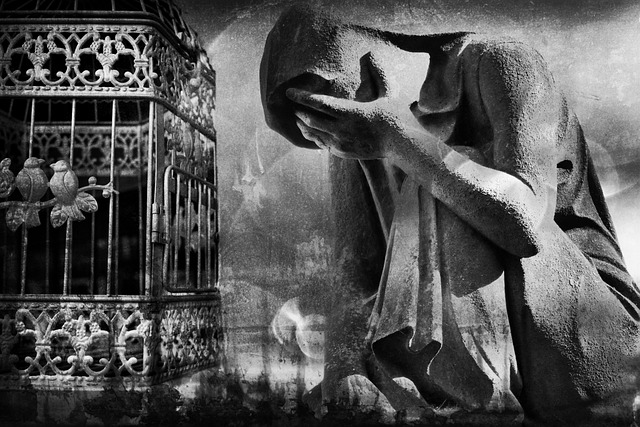Cremation is a respected and environmentally considerate alternative to traditional burial, transforming human remains into basic chemical elements through high-temperature combustion in specialized furnaces. The process, typically lasting two to three hours at temperatures between 1,400 and 1,800 degrees Fahrenheit, is conducted with strict adherence to legal and ethical standards by reputable cremation services. These services offer a range of options to honor the deceased, including direct cremation, traditional ceremonies, military tributes, and environmentally conscious choices. Post-cremation, the bone fragments are processed into ash, which can be interred in urns, memorial gardens, or columbarium niches, and even incorporated into personalized keepsakes like jewels. Cremation services facilitate this with utmost respect for the individual’s cultural, religious, and personal preferences, ensuring a unique and meaningful tribute. The increasing popularity of cremation is attributed to its simplicity, cost efficiency, and the flexibility it provides for personalized memorialization.
When contemplating end-of-life choices or facing the loss of a loved one, understanding the cremation process becomes crucial. This article demystifies cremation by providing a comprehensive overview, including each step from preparation to execution, while also addressing ethical and legal considerations that families may face. We’ll explore the various types of cremation services available and the pivotal role of crematory facilities in guiding this process. Additionally, we’ll delve into meaningful ways to honor and remember a deceased individual after cremation through keepsakes and remembrances, ensuring their legacy endures. Cremation is not merely a procedure but a respectful and personal final journey for the departed, facilitated by modern practices and deep-rooted traditions.
- Understanding Cremation: An Overview of the Process
- The Cremation Process: Step-by-Step Breakdown
- Preparing for Cremation: Ethical and Legal Considerations
- Types of Cremation Services Available to Families
- The Role of Crematoriums in Carrying Out Cremation Services
- Memorializing Loved Ones After Cremation: Keepsakes and Remembrances
Understanding Cremation: An Overview of the Process

Cremation is a process that transforms human remains into their basic chemical components through high-temperature combustion, reducing the body to its primary elements. This procedure is conducted in crematorium furnaces and is a form of disposition chosen by many for reasons including simplicity, environmental considerations, or cultural beliefs. The entire cremation process typically takes around two to three hours and involves several distinct steps. Initially, the deceased’s body is placed on a cremation shelf within the crematorium chamber. Once the temperature within the chamber reaches its optimal range, generally between 1,400 and 1,800 degrees Fahrenheit, the body is subjected to intense heat that causes decomposition. The heat vaporizes bodily fluids, soft tissues disintegrate, and the bones are left. These bones are then carefully removed from the chamber by a crematorium operator and placed in a processing machine known as a crematory furnace or cremation reduction furnace. This machine grinds down any remaining bone fragments into fine ash, which is then collected and processed into a smooth consistency for delivery to the family. Throughout this process, cremation services ensure that the remains are treated with dignity and respect, adhering to legal and ethical standards. These services also guide families through the memorialization options available following the cremation process, including urns, scattering ceremonies, or other forms of remembrance.
The Cremation Process: Step-by-Step Breakdown

Cremation is a dignified and ancient method of final disposition that has evolved over time to become a common alternative to traditional burial. The process involves several distinct steps, each performed with respect for the deceased and their loved ones. Upon receiving authorization and completing necessary paperwork, a reputable cremation service provider will guide the family through the process.
The first step in the cremation process is the identification and certification of the deceased by qualified professionals. This ensures that all legal requirements are met before any procedures commence. The body is then prepared and placed in a sturdy cremation container or casket, which is designed to withstand the high temperatures of the cremation chamber. Next, the body undergoes the cremation process itself within a specialized furnace, also known as a crematory, reaching temperatures that can range from 1400 to 1800 degrees Fahrenheit. This intense heat reduces the body to its basic components, typically within two to three hours.
After the cremation is complete, the remains are carefully removed from the chamber and any metal objects such as prostheses or dental work are separated out due to their potential to damage the crematorium’s crushing devices. The remaining bone fragments are then processed in a mechanical processor, reducing them to fine, consistent particles of cremated remains. These remains are then placed in an urn selected by the family for memorialization purposes. Throughout this entire process, cremation services ensure that all steps are carried out in accordance with local and state regulations, providing families with peace of mind during this difficult time.
Preparing for Cremation: Ethical and Legal Considerations

Types of Cremation Services Available to Families

When a family chooses cremation as a means of honoring a loved one, they are presented with various services designed to provide both a meaningful ceremony and a respectful disposition of the remains. Cremation services can be tailored to reflect the individual’s personality, beliefs, and preferences, offering a range of options from traditional religious rites to more secular or unconventional celebrations. A fundamental choice is between direct cremation, which involves the cremation process without a service prior to it, and a more conventional cremation with a ceremony that precedes the cremation. Direct cremation is often chosen for its simplicity and lower cost. In contrast, a traditional service may include a viewing or visitation, followed by a religious or secular funeral ceremony before the remains are cremated.
Furthermore, many funeral homes provide specialized cremation services that encompass various traditions and cultural practices. These can range from military honors for veterans to eco-friendly options that minimize environmental impact. Additionally, there are crematoriums offering memorial gardens where the urn with the ashes can be interred, along with personalized urns that can serve as a keepsake or be placed in a columbarium niche. The selection of cremation jewels, such as cremation diamonds or glass tokens made from the ashes, is another service available for those who wish to carry their loved one with them. These services ensure that each family can create a unique and fitting tribute to honor the memory of their deceased family member.
The Role of Crematoriums in Carrying Out Cremation Services

Memorializing Loved Ones After Cremation: Keepsakes and Remembrances

Cremation is a reverent and dignified process that honors the departed while providing a meaningful way for families to remember and celebrate their loved ones. This article has delved into the intricacies of cremation, from the meticulous procedures within the crematorium to the diverse services and remembrance options available to grieving families. It is a process steeped in both tradition and modernity, adhering to ethical and legal standards that ensure each individual’s passage is handled with respect. Whether through understanding the step-by-step breakdown or exploring the myriad ways to memorializes one’s loved ones, cremation services offer a range of choices to honor life’s end. As this overview concludes, it underscores the importance of considering cremation as an option that can be both personal and comforting during a time of loss.
